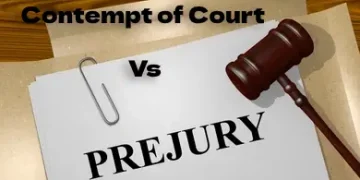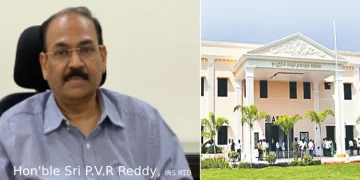Divorce is a legal procedure that marks the termination of a marital union between two adults. Various laws govern different religious communities in India; for instance, Hindus (including Sikhs, Jains, and Buddhists) follow the Hindu Marriage Act, 1955, while Christians adhere to the Indian Divorce Act, 1869, and the Indian Christian Marriage Act, 1872.
Muslims are subject to personal laws of divorce, the Dissolution of Marriage Act, 1939, and the Muslim Women (Protection of Rights on Divorce) Act, 1986. Additionally, the Special Marriage Act, 1954, applies to other marriages. Opting for mutual consent divorce is often recommended as it offers a more efficient and amicable resolution, saving time, energy, money, and unnecessary conflict compared to contested divorces.
How is mutual consent divorce different from contested divorce?
Mutual Divorce is a legal procedure for marital separation initiated when both the husband and wife willingly seek to end their marriage. It is considered a more amicable and civilized approach to marriage termination. The process involves both parties applying for the divorce by mutual consent, making it a faster and less complicated alternative to lengthy litigation.
When a couple mutually agrees to end their marriage, it provides a swift and cost-effective resolution, saving time, energy, and preventing unnecessary disputes. Mutual consent divorce occurs when both spouses agree to the terms and conditions, including aspects like maintenance, alimony, and child custody if applicable.
The legal framework for mutual consent divorce is outlined in section 13-B of the Hindu Marriage Act, 1955, and section 28 of the Special Marriage Act, 1954. According to these provisions, parties seeking divorce under the Hindu Marriage Act must demonstrate at least one year of separation before filing the petition. During this separation period, they should establish that they have not lived together as husband and wife. Living under the same roof while maintaining separate spousal roles is permissible but challenging to prove in practice. Recent case laws emphasize the importance of demonstrating a genuine and sustained separation during this period.
Essential Components for Mutual Consent Divorce
- The individuals have been residing apart for one year or longer.
- Living together has proven unfeasible for the parties.
- There is a mutual agreement between the spouses to terminate their marriage.
- Following the approval of the first motion, a waiting period of six months is obligatory before filing the second motion petition for mutual consent divorce.
Essential Factors to Consider Throughout the Divorce Process
Critical Matters to Address Through a Memorandum of Understanding Before Legal Proceedings:
- Alimony/Maintenance:
If one partner is incapable of covering their daily expenses, the other is obligated to provide a one-time settlement amount. This sum may be disbursed in one or two installments, contingent upon the mutual agreement between the spouses. Typically, it is paid in two or three installments. - Property and Asset Settlement:
Resolving the ownership rights of property and assets between the spouses. - Child Custody:
Determining which partner will be granted custody of the child following the divorce. - Resolution of Pending Litigation (if applicable):
It is imperative for both parties to address and settle any ongoing legal disputes in writing before initiating the mutual consent divorce process.
Initiating Mutual Consent Divorce:
The initial step involves open communication between spouses regarding their future course. If both parties agree that the marriage is no longer viable, they should alleviate the tension surrounding them. It’s crucial to acknowledge that the marriage has broken down, setting aside concerns about societal opinions, as the husband and wife are the best judges of their own situation.
Child Custody in Mutual Consent Divorce:
When children are part of the equation, spouses should collaboratively decide on child custody and visitation rights. Discussions may include interim custody arrangements for vacations and holidays. Both parents are deemed equally capable of securing custody, and the understanding and agreement between the parties prevail. Joint custody or shared parenting can be considered, minimizing potential suffering for both parents and children.
Financial Settlement in Mutual Consent Divorce:
Another pivotal aspect is the financial settlement, encompassing various elements such as alimony, maintenance, housing, education expenses, higher education costs, children’s marriage, stridhan, joint investments, joint accounts, and more. As mutual consent divorce lawyers, we facilitate a platform for calm discussions, allowing parties to reach their own solutions. Leveraging our extensive experience, we present different settlement options. In emotionally charged situations, where logic may falter, we aim to guide parties towards resolution.
When Can Mutual Consent Divorce Be Filed?
The primary requirement for a mutual consent divorce is the willingness of both spouses to separate. Additionally, certain considerations should be taken into account before initiating the divorce process.
Location for Filing Mutual Consent Divorce:
- The place where the marriage occurred.
- The location where the husband and wife last lived together.
- The residence of the wife at the time of filing the petition.
Procedure for Filing Mutual Consent Divorce:
- Submission of the Petition in the Family Court:
Both spouses jointly present a petition for the dissolution of marriage, citing their inability to reconcile differences and live together. The petition asserts mutual agreement to dissolve the marriage or a period of living separately for one year or more. Both parties must sign this petition. - Required Documents for Filing Mutual Divorce Petition:
- Address Proof for Husband and Wife.
- Identity Proof for Husband and Wife.
- Two Passport Size Photographs for each spouse.
- Four Photographs of the Marriage.
- Marriage Card.
- Memorandum of Understanding.
- Evidence of living separately for a year.
- Marriage Certificate (if registered).
- Appearance Before the Family Court Judge for the First Motion for Divorce:
Both parties, accompanied by their legal counsels, enter their appearance in court. The Family Court Judge reviews the petition and accompanying documents. While the court may attempt reconciliation, if unsuccessful, the process continues. - Joint Statement on Oath:
After reviewing the application, the court may order the parties to provide joint statements on oath. These statements are signed by both parties and their respective counsels, marking the passing of the first motion. - First Motion Order Passed, 6-Month Cooling Period for the Second Motion:
The court issues an order for the first motion, and a six-month cooling-off period is granted before the parties can file the second motion. The maximum timeframe to file the second motion is 18 months from the date of presenting the divorce petition in the family court. - Second Motion Hearing and Final Decree:
If both parties decide to proceed, they appear for the second motion, involving final hearings and recording joint statements before the Family Court. If the court is satisfied that reconciliation is impossible, and issues like alimony, child custody, property, and pending litigations are resolved, a decree of divorce is passed, officially dissolving the marriage.
The divorce becomes conclusive upon the court’s issuance of the decree.
How Long Does it Take to Obtain a Final Divorce through Mutual Consent?
According to Section 13-B of the Hindu Marriage Act, 1955, the process involves two motions to attain the final decree of divorce. In the initial stage, after at least one year of separation, both parties approach the family court for mutual consent divorce. A joint statement on oath is presented during this first motion before the family court.
This initial stage is termed the first motion. Following approval by the family court, as per legal requirements, both parties must observe a mandatory cooling-off period of at least six months to potentially reconcile their differences and resume married life. If reconciliation proves unsuccessful during this period, the parties can proceed by filing a second motion petition for divorce with mutual consent.
The second motion involves another round of joint statements on oath. After signing these joint statements, the family court grants the final decree of divorce. Therefore, based on the above-discussed process, it is stipulated that a minimum period of six months is obligatory to obtain the final decree of divorce through mutual consent.
Can Mutual Consent be Revoked?
Prior to the issuance of a decree of mutual consent divorce, either party has the right to withdraw their consent. Withdrawal of consent is permissible before filing the second motion petition, as the consent of both parties is indispensable during this stage. However, it’s crucial to note that the court takes a stern view on any misuse of the first motion for personal advantage.
Additionally, a significant judgment by the Hon’ble Delhi High Court in the 2018 case of Rajat Gupta vs. Roopali Gupta highlights that withdrawing consent after recording statements in the first motion may lead to the initiation of contempt of court proceedings against the defaulting party.

















